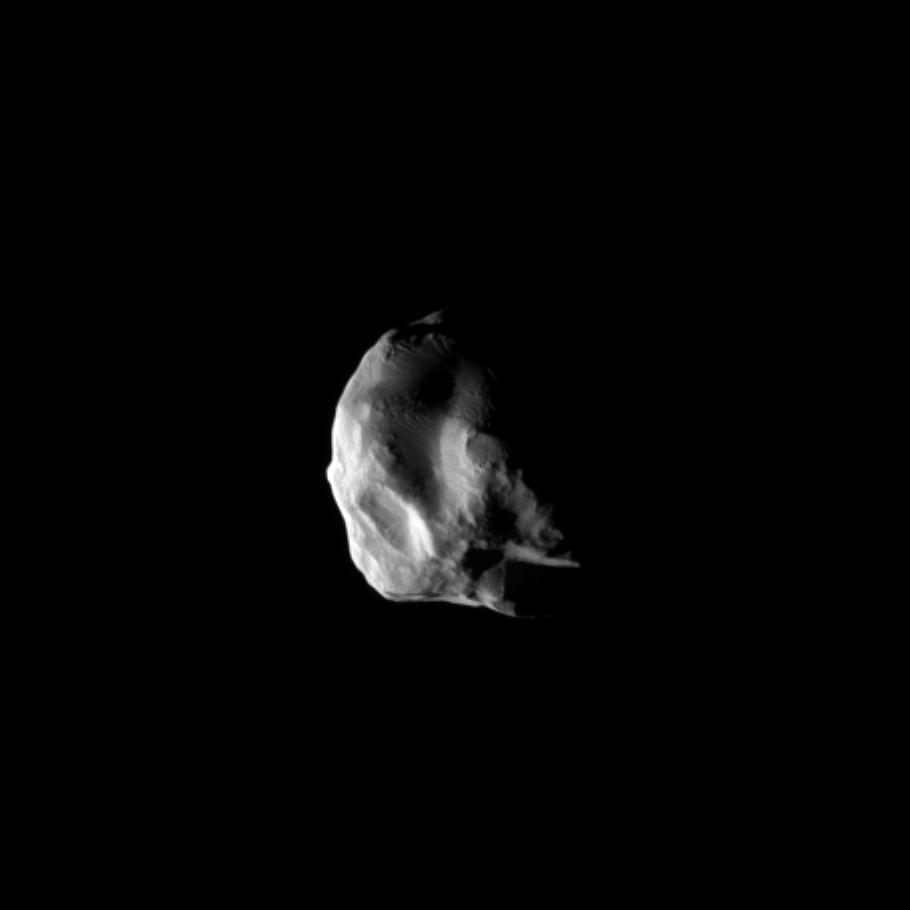Closest View of Helene

| PIA Number | PIA12653 |
|---|---|
| Language |
|
The Cassini spacecraft snapped this image during the spacecraft's closest flyby of Saturn's moon Helene, on March 3, 2010.
See Helene of Troy for the previous closest view of Helene (33 kilometers, or 21 miles across). The small moon leads the much larger Dione by 60 degrees in the moons' shared orbit. Helene is a "Trojan" moon of Dione, named for the Trojan asteroids that orbit 60 degrees ahead of and behind Jupiter as the giant planet circles the Sun.
Lit terrain seen here is on the anti-Saturn side of Helene. The south pole of the moon is in the lower right of the image.
The image was taken in visible light with the Cassini spacecraft wide-angle camera. The view was obtained at a distance of approximately 1,900 kilometers (1,200 miles) from Helene and at a Sun-Helene-spacecraft, or phase, angle of 90 degrees. Scale in the original image was 235 meters (771 feet) per pixel. The image has been magnified by a factor of two and contrast-enhanced to aid visibility.
The Cassini-Huygens mission is a cooperative project of NASA, the European Space Agency and the Italian Space Agency. The Jet Propulsion Laboratory, a division of the California Institute of Technology in Pasadena, manages the mission for NASA's Science Mission Directorate, Washington, D.C. The Cassini orbiter and its two onboard cameras were designed, developed and assembled at JPL. The imaging operations center is based at the Space Science Institute in Boulder, Colo.
For more information about the Cassini-Huygens mission visit http://saturn.jpl.nasa.gov . The Cassini imaging team homepage is at http://ciclops.org .
Credit: NASA/JPL/Space Science Institute
